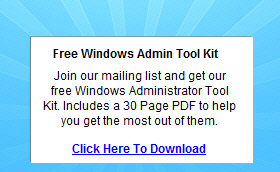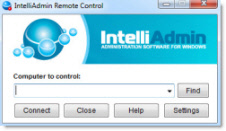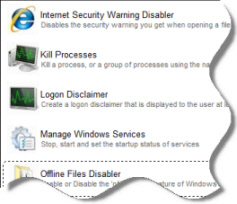receive connector
Hello,
If I want to allow local users to use pc's out on the internet and use my Exchange server as an smtp server and enable authentication. Should I create a connector open to all ip address with Anonymous ticked and with Transport Layer Security ( TLS ) ticket,
is that good and safe enough?
December 1st, 2010 2:53pm
On Wed, 1 Dec 2010 19:46:56 +0000, acmsoft wrote:
>If I want to allow local users to use pc's out on the internet and use my Exchange server as an smtp server and enable authentication. Should I create a connector open to all ip address with Anonymous ticked and with Transport Layer Security ( TLS ) ticket,
is that good and safe enough?
That depends on what you're really asking. Are they sending e-mail
only to addresses in your e-mail system, or are they expecting to be
able to send e-mail to any domain?
If you're running Exchange 2007 or 2010 you can use the client receive
connector and port 587. Leave port 25 for server-to-server message
transfer.
---
Rich Matheisen
MCSE+I, Exchange MVP
--- Rich Matheisen MCSE+I, Exchange MVP
Free Windows Admin Tool Kit Click here and download it now
December 1st, 2010 9:40pm
This would be helpful
http://msexchangeteam.com/archive/2006/12/28/432013.aspx
December 2nd, 2010 12:48am
>That depends on what you're really asking. Are they sending e-mail
only to addresses in your e-mail system, or are they expecting to be
able to send e-mail to any domain?
From the Exchange 2010 perspective what is the difference when an e-mail is received from an external source and destinated for a recipient inside the organisation and an e-mail received from an external source to be delivered to an external e-mail
address.
Do both cases have to do with the receive connectors configuration ?
What is the difference between a client (located somewhere on the internet ) using my Exchange as his smtp server address to send e-mails to external addresses vs Mail Servers sending e-mails destinated for my Exchange server, are not they both received
at port 25 and taken care of by the receive connector ?
Thanks in advance
Free Windows Admin Tool Kit Click here and download it now
December 2nd, 2010 12:57am
What is the difference between a client (located somewhere on the internet ) using my Exchange as his smtp server address to send e-mails to external addresses...
When a client is using your exchange server obvioulsy it authenticates and has a mailbox on your exchange server.. it connects and sends the mail through your -- receive connector -> exchange connector-> send connector and message is saved.
Mail Servers sending e-mails destinated for my Exchange server .. When the mail servers send the mail to your exchange server at port 25 , the server provides informationn and confirmation of which server it is and then your mail server wverifies
and accepts the message for the users located in your org. \
if it accepts for all usewrs then it is open relay .. if it redirects to other domain then it relay.
not they both received at port 25 and taken care of by the receive connector ?
Smtp on port 25 is the way mail ios transferred on the internet... If you want you can change the port to someone with whom you can share the mail at the same port. But port 25 is universally open
December 2nd, 2010 1:43am
therefore how many receive connectors should I set
1 for internal outlook connections
1 to receive e-mails from the internet to the company mailboxes
and I should do another one for smtp incoming connections which will use my server to send mails from
Free Windows Admin Tool Kit Click here and download it now
December 2nd, 2010 2:21pm
can someone also please explain why although I have removed all options under authentication and permission on the client receive connector I am still managing to connect to the same receive connector by telnet to port 587 from the command ?
December 2nd, 2010 2:32pm
which option on the receive connector dictates if a sender can relay messages because it gets confusing
for example even if there is anonymous users ticked it does not mean that the same connector can relay
how do I set a particular connector to relay message and another one not ?
Free Windows Admin Tool Kit Click here and download it now
December 2nd, 2010 3:49pm
On Thu, 2 Dec 2010 05:51:42 +0000, acmsoft wrote:
>>That depends on what you're really asking. Are they sending e-mail only to addresses in your e-mail system, or are they expecting to be able to send e-mail to any domain?
>From the Exchange 2010 perspective what is the difference when an e-mail is received from an external source and destinated for a recipient inside the organisation and an e-mail received from an external source to be delivered to an external e-mail address.
The first case does not require your server to send the e-mail to
another e-mail system. The second case does. This really isn't
something that specific to Exchange, though.
>Do both cases have to do with the receive connectors configuration ?
Yes. And the set of domains in your accepted domains list.
>What is the difference between a client (located somewhere on the internet ) using my Exchange as his smtp server address to send e-mails to external addresses
If you permit this sort of access to anonymous connections you'll
quickly find your server's IP address in many DNSBLs.
>vs Mail Servers sending e-mails destinated for my Exchange server,
You're not sending the e-mail on behalf of some other organization,
you're only accepting e-mail for delivery to mailboxes under your
control.
>are not they both received at port 25 and taken care of by the receive connector ?
Port 25 can be used in both cases. However, the anonymous
server-to-server connections on port 25 can safely be limited to only
accepting e-mail sent to domains in your accepted domains list.
Port 587 (the client submission port) can be restricted and
controlled. E.g. requiring authentication and disallowing anonymous
connections, and only allowing TLS connections. Once you trust the
sender you can allow them to use your server as a relay.
---
Rich Matheisen
MCSE+I, Exchange MVP
--- Rich Matheisen MCSE+I, Exchange MVP
December 2nd, 2010 10:04pm
On Thu, 2 Dec 2010 19:14:01 +0000, acmsoft wrote:
>therefore how many receive connectors should I set
That depends on what how you want your server to be used.
>1 for internal outlook connections
No, this isn't necessary. Outlook, on your LAN, is going to use RPC to
connect to your Client Access Server. Outlook, from the Internet, can
use Outlook Anywhere (encapsulating RPC in HTTPS) to connect to yout
CAS.
The "Client" receive connector is there to accept authenticated
connections from clients that aren't using RPC or RPC-over-HTTPS (i.e.
not Outlook), and it uses port 587 (the client submission port)
instead of port 25.
>1 to receive e-mails from the internet to the company mailboxes
Yes.
>and I should do another one for smtp incoming connections which will use my server to send mails from
From client software, not from other servers. But this is the purpose
of the "Client" receive connector.
---
Rich Matheisen
MCSE+I, Exchange MVP
--- Rich Matheisen MCSE+I, Exchange MVP
Free Windows Admin Tool Kit Click here and download it now
December 2nd, 2010 10:11pm
On Thu, 2 Dec 2010 19:24:36 +0000, acmsoft wrote:
>can someone also please explain why although I have removed all options under authentication and permission on the client receive connector I am still managing to connect to the same receive connector by telnet to port 587 from the command ?
By removing everything from the Authentication tab you're saying that
no form of authentication will be accepted.
---
Rich Matheisen
MCSE+I, Exchange MVP
--- Rich Matheisen MCSE+I, Exchange MVP
December 2nd, 2010 10:17pm
On Thu, 2 Dec 2010 20:41:09 +0000, acmsoft wrote:
>which option on the receive connector dictates if a sender can relay messages because it gets confusing
Authenticated users can use your receive connector as a SMTP relay.
>for example even if there is anonymous users ticked it does not mean that the same connector can relay
>
>how do I set a particular connector to relay message and another one not ?
Please read this:
http://technet.microsoft.com/en-us/library/aa996395.aspx
---
Rich Matheisen
MCSE+I, Exchange MVP
--- Rich Matheisen MCSE+I, Exchange MVP
Free Windows Admin Tool Kit Click here and download it now
December 2nd, 2010 10:18pm
ok so since Outlook and Outlook anywhere will use RPC to connect to Exchange and do not need a receive connector, what kind of clients will user the client connector, will they be clients like Thunderbird and if yes why they do not use port 25 instead
of 587 ( is it not 25 the default for every client )
December 3rd, 2010 4:01pm
On Fri, 3 Dec 2010 20:54:57 +0000, acmsoft wrote:
>ok so since Outlook and Outlook anywhere will use RPC to connect to Exchange and do not need a receive connector, what kind of clients will user the client connector, will they be clients like Thunderbird
Yes.
>and if yes why they do not use port 25 instead of 587 ( is it not 25 the default for every client )
The use of port 25 certainly is more common. But common usage isn't
always correct usage.
http://www.ietf.org/rfc/rfc2476.txt
---
Rich Matheisen
MCSE+I, Exchange MVP
--- Rich Matheisen MCSE+I, Exchange MVP
Free Windows Admin Tool Kit Click here and download it now
December 3rd, 2010 9:37pm
Thank You Rich, you are very helpful
December 4th, 2010 9:14am


